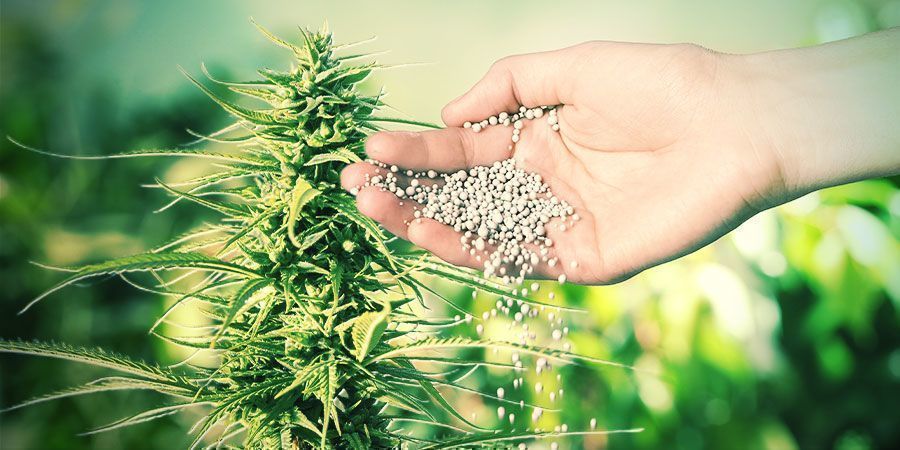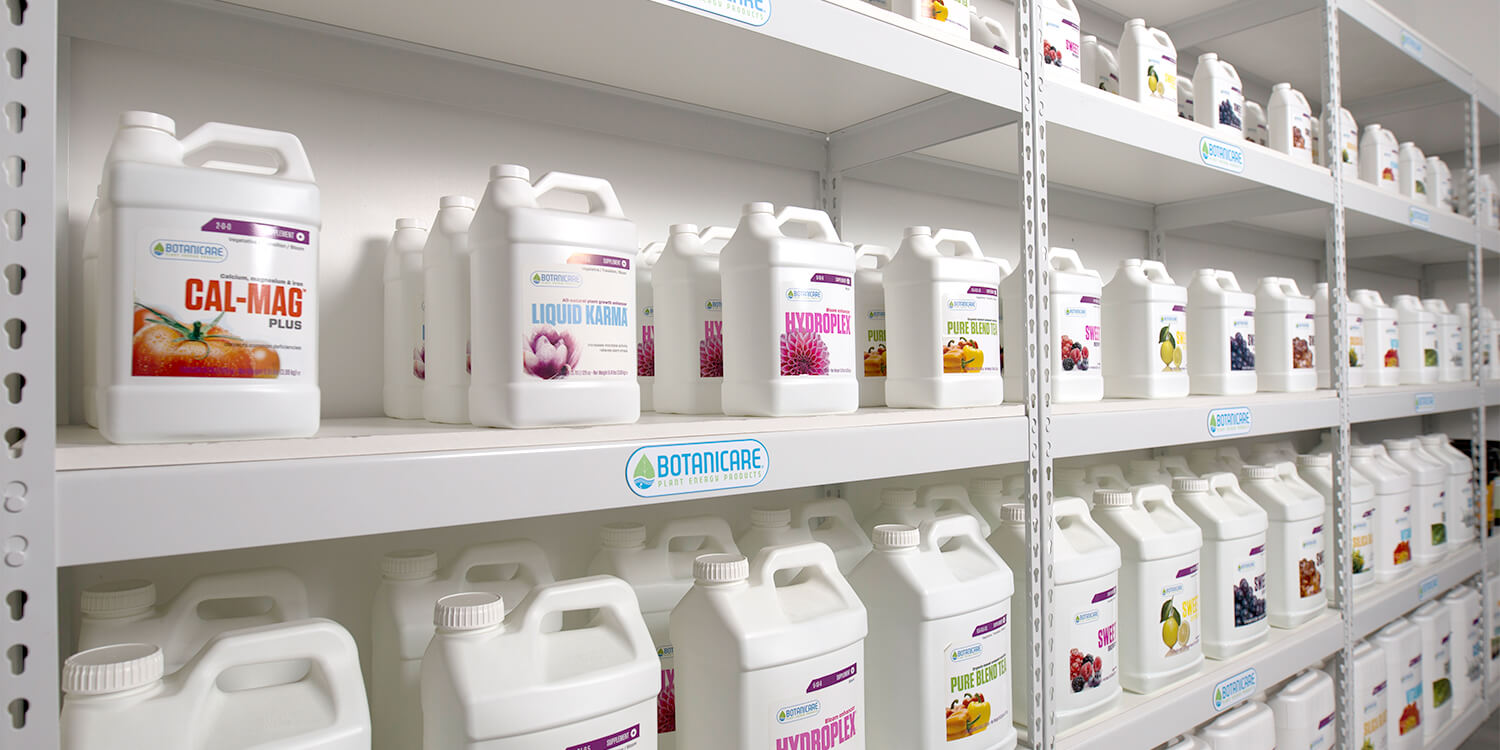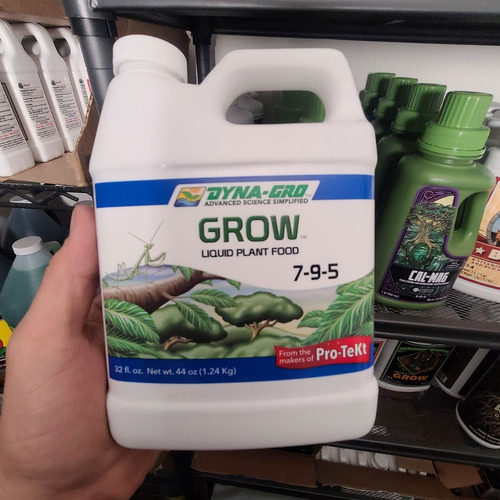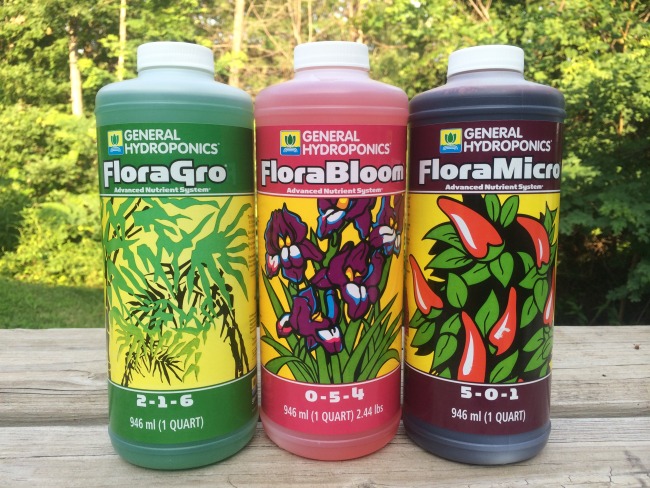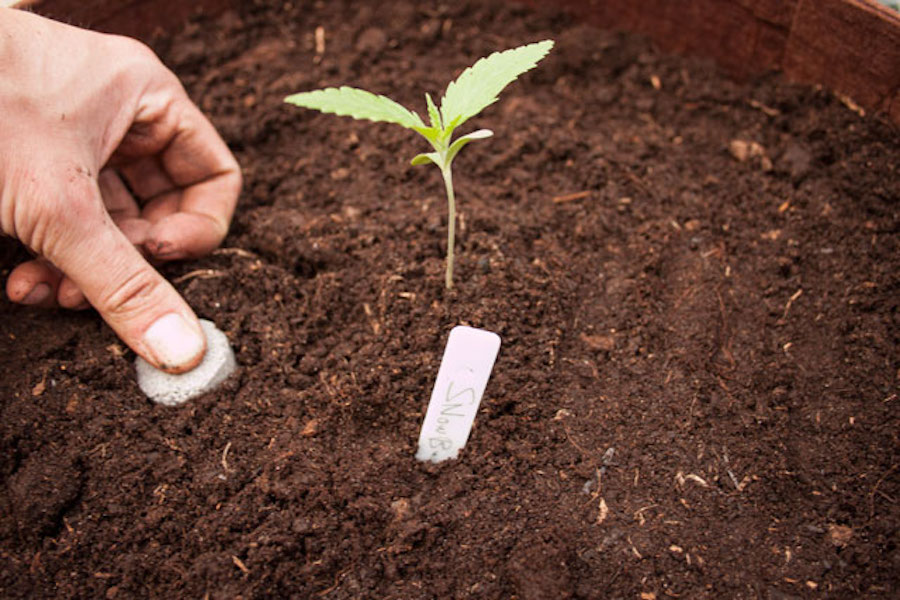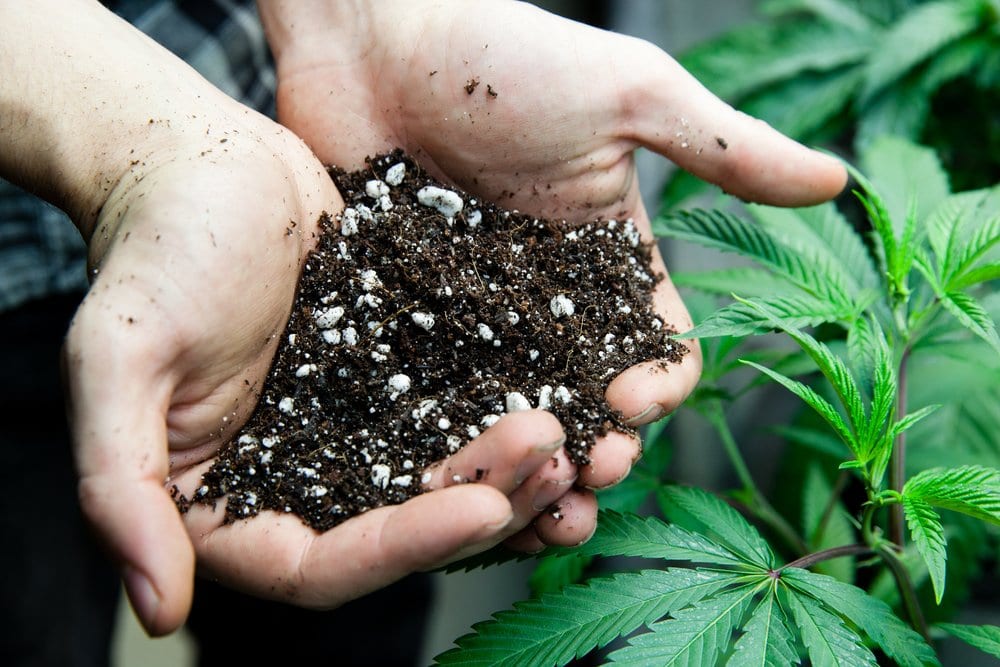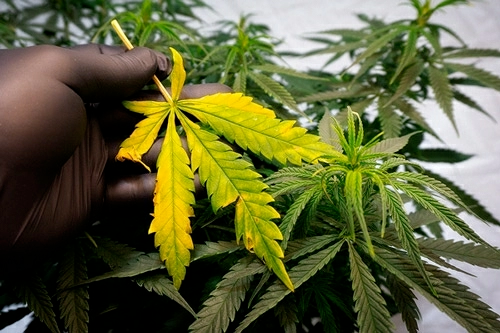How To Grow Marijuana Seeds
Best Cannabis Nutrients to Boost Your Yield
Cannabis plants grow well with decent soil, light, water, and temperate conditions; nutrients will help them thrive and grow healthy. This means that specific nutrients are required for cannabis plants to grow well and produce flowers or buds. That said, here are the best cannabis nutrients.
What are Cannabis Nutrients?
Growing cannabis requires more nutrients than most other crops. Therefore, outdoor weed growers usually add powdered fertilizers to the soil when transplanting the cannabis plants outside. This will provide the cannabis plants with all or most of the nutrients they require during their life cycle.
Conversely, indoor cannabis growers use liquid nutrients that they mix with water before watering plants. However, liquid nutrients take more time since you must measure and mix them in water once to twice weekly. Besides, we don’t recommend using nutrients meant for indoor-growing on outdoor plants since they are often made of synthetic mineral salts that can harm beneficial microorganisms.
Best Cannabis Nutrients
1. Botanicare Pure Blend Pro Bloom (1-4-5 NPK) Soil Nutrient
Botanicare Pure Blend Pro Bloom is a premium soil nutrient plant for flowering cannabis plants. The nutrient system comes in two bottles; Grow and Bloom. Use “Grow” in the vegetable phase and “Bloom” in the blooming phase.
Image Source: Botanicare.com
I have used it to grow cannabis, and It’s one of the essential items I have used on my small weed farm, and I recommend it to the growers looking for a boost in yield.
2. House and Garden, Soil A&B Base Nutrient
H&G comes in two bottles; Soil A and Soil B. Though the nutrient system is a bit expensive, it’s effective. When a top researcher was testing the effectiveness of this nutrient solution, he used cannabis as the specimen, and it worked perfectly. Besides, I have been using it for half a decade, and the results are pleasing.
Image Source: hydromaxgarden.com
However, besides having a high price tag, it’s harder to find it online since the brand prefers selling it in person at their store.
3. Fox Farm FX14049 Liquid Nutrient
The FF Trio comes in three bottles; Big Bloom, Grow Big, and Tiger Bloom. The nutrient system is popular among cannabis growers since it contains a range of natural sources of nutrients, such as bat guano and earthworm castings which cannabis plants thrive on. However, FF Trio contains too much organic matter, which increases the possibility of root issues, but still, the organic matter is ideal for plants in a hand-watered environment.
Image Source: amazon.com
Grow Big, and Tiger Bloom usually offers the key nutrients required for cannabis. Besides, Big Bloom contains several micronutrients and beneficial compounds that help nutrient intake and root health. My friend can’t stop praising this nutrient system.
4. Dyna-Gro Liquid Grow & Liquid Bloom, DYNAGB8OZSET
Dyna -Gro Liquid Nutrient comes in two bottles; Liquid Grow and Liquid Bloom. This nutrient system was originally designed for orchids but has been proven effective for cannabis plants. Use “Liquid Grow” in the vegetative stage and “Liquid Bloom” in the flowering stage.
Image Source: listado.mercadolibre.com
Furthermore, if you want professional results without spending a lot of money or having to mix several bottles, count on this nutrient system. This one provides everything your plants require from seed to harvest. I remember I was using it before when I was starting to grow cannabis. It’s quite a great recommendation for newbies.
5. General Hydroponics Flora Trio, GH Flora Series
General Hydroponic Flora Trio comes in three bottles, FloraMicro, FloraGrow, and FloraBloom. Besides, this cannabis nutrient system is cheap and easy with great results in coco and hydro. However, I found that the solution is quite thick, making it hard to measure conveniently.
Image Source: nosoilsolutions.com
On the other hand, I have been using this nutrient system for a few years, and I’m always pleased with the results, especially when growing cannabis in the soil.
What Nutrients Do Cannabis Plants Need?
Cannabis plants require a different amounts of nutrients at different phases of growth. For instance, a cannabis plant needs more nitrogen during the vegetative stage and more potassium and phosphorus during flowering for bud production—also known as “bloom” nutrients.
Image Source: dutch-passion.blog
Here are the essential nutrients for cannabis;
1. Nitrogen
Weed plants usually require nitrogen during the vegetative phase of their development. Besides, nitrogen is a vital component of chlorophyll; without it, a plant cannot convert sunlight into energy and cannot grow. Conversely, nitrogen is also part of amino acids, which serve as the building blocks for plant proteins. Your marijuana plants will be weak if they lack these vital proteins.
Additionally, nitrogen is a component of ATP, which helps plant cells control how much energy they use. Plus, nitrogen is required to produce nucleic acid, a component of DNA or RNA, and without it, plant cells cannot grow and multiply.
2. Potassium
Potassium nutrients are important in regulating the cannabis plant systems that keep it healthy and growing. Besides, it’s crucial in osmoregulation, which is the passive regulation of salt and water concentrations in the plant. Potassium usually achieves this by controlling the opening and closing of the stomata (the pores in the leaves through which plants exchange oxygen, CO2, and H2O).
Furthermore, potassium stimulates the production of ATP, which usually works to store the energy produced during photosynthesis by creating glucose. Then, the glucose is used by the weed plant as energy as it grows. Potassium nutrient deficiency will result in weak, energy-starved plants that look burnt since they can’t regulate the exchange of oxygen, CO2, and H2O.
3. Phosphorus
Phosphorus nutrients are required for the growth of large, healthy buds. Besides, the nutrients are needed to help the cannabis plant build its structure as it grows from its roots to its flowers.
Marijuana plants will have underdeveloped roots and may not even flower if not given enough phosphorus. The first signs of low phosphorus are purple color veins in the leaves.
4. Calcium
Cannabis plants require calcium to help keep the structure of cell walls together. Without calcium nutrients, new growth will not develop correctly, and the plant will not function as it should. Besides, you will notice stunted growth, plant leaves will curl, and the plant will develop rusty patches.
5. Magnesium
Magnesium is a crucial component of chlorophyll; plants cannot make glucose through photosynthesis without the ingredient. Without magnesium, sunlight cannot be converted into energy. Besides, magnesium also helps metabolize glucose, making it accessible for the weed plant to grow. The leaves will turn yellow with insufficient magnesium, spreading to the veins.
Liquid Nutrients Vs. Organic Fertilizers
Image Source: royalqueenseeds.com
Liquid Nutrients
As mentioned earlier, liquid nutrients are for indoor weed growing. They are used on weed plants in the soil mix, hydroponics, and other growing medium and can be applied through drip lines, hoses, and misters. And since liquid nutrients are readily available to the roots of a marijuana plant, they’re fast-acting, meaning they can damage your cannabis plants if fed excessively.
You will need a separate water tank to mix liquid nutrients with water. You will also need to know the amount of water each plant needs. Then, depending on the amount of water required, add the right ratio of liquid nutrients per the bottle’s instructions.
Organic Cannabis Fertilizers
Organic fertilizers come from organic sources like animal and vegetable waste. Besides, they also have sediments such as glacial rock dust and gypsum that offer useful minerals for the soil and cannabis plants. The organic nutrients are commonly used for outdoor weed growing and are generally in powder form.
Organic fertilizers are more adaptable than liquid nutrients since they often have fewer readily soluble nutrients and more components that benefit soil organisms. In addition, most of these fertilizers are readily available and come at budget-friendly prices. After buying them, mix them into organic soil before potting them outside.
Here are some of the organic fertilizers to use on your marijuana plants
- Nitrogen: Blood meal, bat guano, fish meal, and bat guano
- Potassium: Kelp meal, wood ash
- Phosphorus: Rock dust, bone meal
- Calcium & magnesium: Dolomite lime
How to Mix Cannabis Nutrients
Nutrient fertilizer bags and bottles usually indicate how much of the three primary nutrients, N-P-K: nitrogen, phosphorous, and potassium, are present in the product. For instance, a product labeled “10-4-4” will have 10% nitrogen, 4% phosphorus, and 4% potassium by weight.
Image Source: leafbuyer.com
Usually, a vegetative fertilizer should have high nitrogen, moderate potassium, and low phosphorus, for instance, 9-5-4. Taper off the nitrogen and concentrate on potassium and phosphorous as the cannabis plant enters the flowering stage—aim for a ratio of 3-7-8, for instance.
On the other hand, solution bottle fertilizers are commonly classified as “grow” solutions, which are high in nitrogen and required for the vegetative stage, and “bloom” solutions, which are high in phosphorus and required for flower formation. So, if you don’t want to get bombarded by numbers, you can opt for these broad terms.
Cannabis Nutrient-Related Issues
Image Source: dutch-headshop.eu
1. pH Imbalance
pH issues can result from imbalances in your water, medium, and nutrients. Besides, pH imbalances significantly influence your plant’s health and create problems such as deficiencies, nutrient lockout, and more. Furthermore, pH issues severely limit plant development and reduce harvest quantity and quality if left unattended.
2. Nutrient Lockout
Nutrient lockout occurs when nutrient accumulation around your cannabis plant’s roots or pH imbalances prohibit it from absorbing other nutrients. Besides, the nutrient lockout usually results in nutrient deficiencies, which cause brown patches, yellowing foliage, irregular leaf size and shape, and burnt leaf tips. However, the symptoms differ depending on the nutrients your cannabis plant lacks.
3. Nutrient Burn
Overfeeding or nutrient accumulation in the growing media are the most common causes of nutrient burn. The marijuana plants usually develop dark green leaves with neon green tips that curve upwards about 90 degrees, as well as purple, magenta, or deep red stems or branches. Also, flowering plants develop sugar leaves and yellow calyxes before dying a fast death.
This nutrient-related issue is addressed by flushing the cannabis roots for at least one week with pH-neutral water before gradually reintroducing the marijuana fertilizer. Also, measuring EC and PPM can help you.
4. Nutrient Deficiency
The nutrient deficit can result from underfeeding or nutrient lockout. On the other hand, nitrogen, potassium, phosphorous, or secondary nutrient deficiencies can result in symptoms such as dry foliage, brown or yellow leaves, and discolored stems. This nutrient-related issue is treated by introducing/increasing more nutrients or first treating nutrient lockout.
5. Overfeeding
Overfeeding your cannabis plants with chemical fertilizers and boosters might cause them to burn. And since chemical nutrients are extremely concentrated, inexperienced marijuana growers might easily overfeed their plants. Besides, overfeeding is characterized by dry, burnt-looking leaves with brown or yellow discoloration, upward bent tips, and burnt edges.
On the other hand, new growers sometimes purchase extra supplements to correct current nutrient issues, which worsens matters. Overfeeding needs to be treated as soon as possible with pH stabilization, a root flush, and a new feeding routine.
Frequently Asked Questions on the Cannabis Nutrients
1. Can you grow marijuana without nutrients?
Yes, however, your harvest will be average. Adding nutrients is mainly to boost growing conditions and harvest yield.
2. When should I start feeding nutrients to my cannabis plants?
You can start feeding the marijuana nutrients to your plants as soon as they have 2-3 sets of leaves. Some fertilizer brands usually start the feeding program 1 week after germination, during the seedling stage, which is good. Besides, depending on the growth medium, nutrients will be required sooner or later. Some soil mixes contain nutrients during the first 3-4 weeks, referred to as “hot mixes.”
3. When should I stop feeding nutrients to my cannabis plants?
Many growers stop feeding their plants with nutrients during the last week (or two) of flowering and merely water them. When chemical nutrients are used, growers flush their plants to avoid or reduce the “chemical” flavor in the flowers. Besides, pistils will be brown and curled as the harvest date approaches, and trichomes will be milky or amber/brown.
Featured Image Source: zamnesia.com

